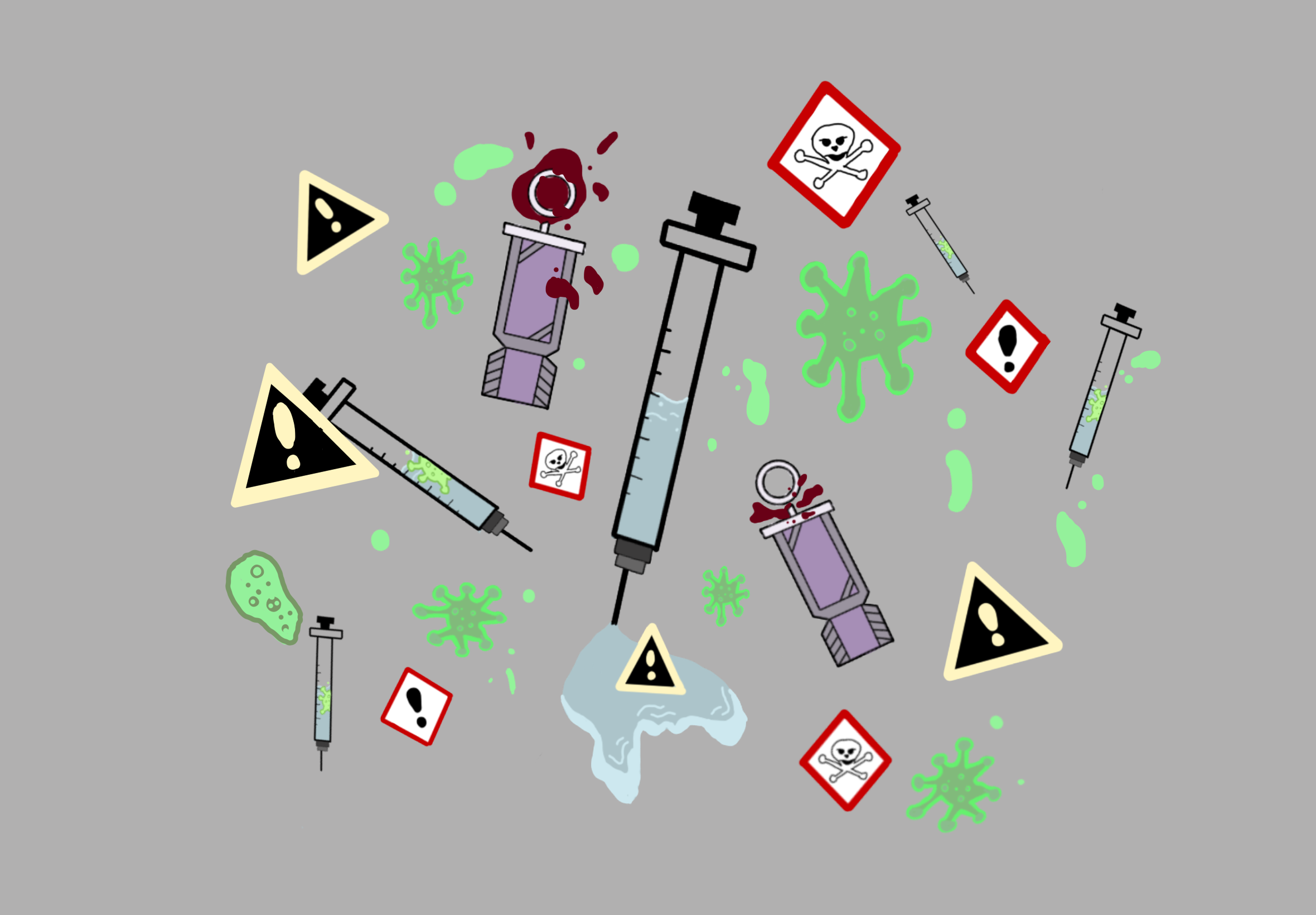Autoclaving: A Start to Disposing of Medical Waste
Katelyn Kim ’25
Daphne Wong ’26
As years have passed, our world has become infested with the effects of waste produced in the healthcare industry. Moreover, the waste created by healthcare facilities can be infectious materials, toxic, or radioactive (Health-Care Waste, 2018). With a wide variety of waste being produced, the healthcare industry must be introduced to implementing a solution before further impact upon our environment.
Overall, the waste created varies from chemicals to pharmaceuticals and sharps (WHO, 2018). Specifically, each type of waste from the healthcare industry contributes to a distinct societal effect. For example, sharp waste, which generalizes the discarded medical needles and other sharps needed in the medical field, can be a threatening safety risk to social workers and waste workers (US EPA, 2022). Having unsanitary needles inside trash bags near public workers exposes them to toxic diseases, viruses, and hazardous infections (US EPA, 2022). Additionally, incineration, the common method of destroying sharp waste, imposes extreme health and environmental concerns (The Impact of Sharps and Medical Waste on the Environment, n.d.). Some hazardous pollutants from this process are mercury and dioxins, which can infect crops and livestock, risking society's food supplies (The Impact of Sharps and Medical Waste on the Environment, n.d.). Furthermore, if such pollutants are integrated into plant tissues and consumed by humans, the human body's immune systems can be severely affected, posing a serious threat to public health (The Impact of Sharps and Medical Waste on the Environment, n.d.). With the effect of sharp wastes on society's environment and humans' vulnerable health, a solution must be found for sharp wastes in the medical field.
As sharps such as needles, syringes, auto-injectors, infusion sets, and lancets are essential tools in the medical field, replacing the materials themselves is challenging, and a sustainable and safe method of disposal of this waste has yet to be found (Shelby County Health Dept, n.d.). However, through autoclaving, a method of sterilizing lab equipment, sharp waste from medical facilities can be sterilized and compacted, making them safe to be disposed of in landfills with regular trash (Autoclaves for Medical Waste 101, 2020). The invention of autoclaving can prevent almost 70 percent of all pollutant emissions from incineration (The Impact of Sharps and Medical Waste on the Environment, n.d.).
However, although autoclaving decreases the environmental risk incineration imposes, it can only be implemented upon particular medical wastes. For example, it cannot sterilize pathological waste, trace chemotherapy wastes, or tubing or needles (Autoclaves for Medical Waste 101, 2020). Having restricted accessibility by having a strict limitation on specific waste products, autoclaving proves as the beginning of conserving medical waste, but the remaining categories of waste in healthcare are yet to have a successful approach to protecting the environment with its dangerous disposal of products.
With autoclaving as an example, we must collectively continue to reduce the impacts of medical waste by disposing of them in environmentally friendly methods.
References
Autoclaves for Medical Waste 101. (2020, November 9). Stericycle.
https://www.stericycle.com/en-us/resource-center/blog/autoclaving-medical-waste-101
World Health Organization. (2018, February 8). Health-care waste. Who.int; World Health Organization: WHO.
https://www.who.int/news-room/fact-sheets/detail/health-care-waste
The Impact of Sharps and Medical Waste on the Environment. (n.d.). Mail Your Sharps, Inc.
US EPA, OLEM. (2016, February 17). Medical Waste | US EPA. US EPA. https://www.epa.gov/rcra/medical-waste
Shelby County Health Department. What are Sharps? | Shelby County Health Dept., TN. (n.d.).
